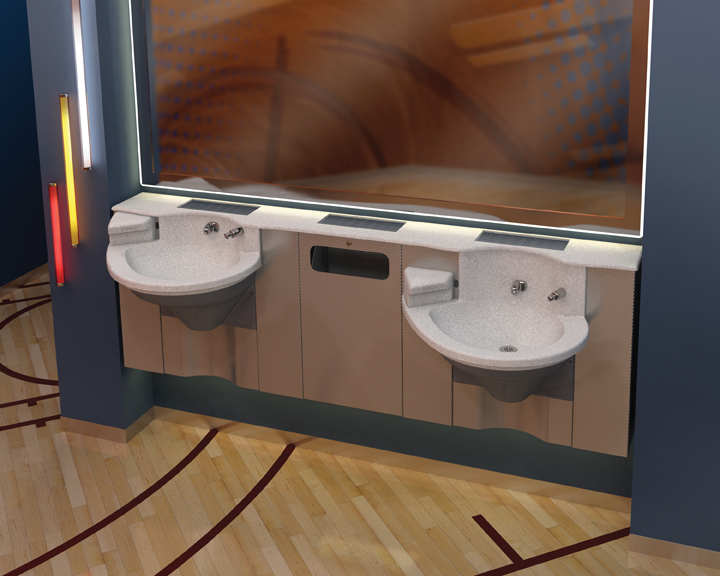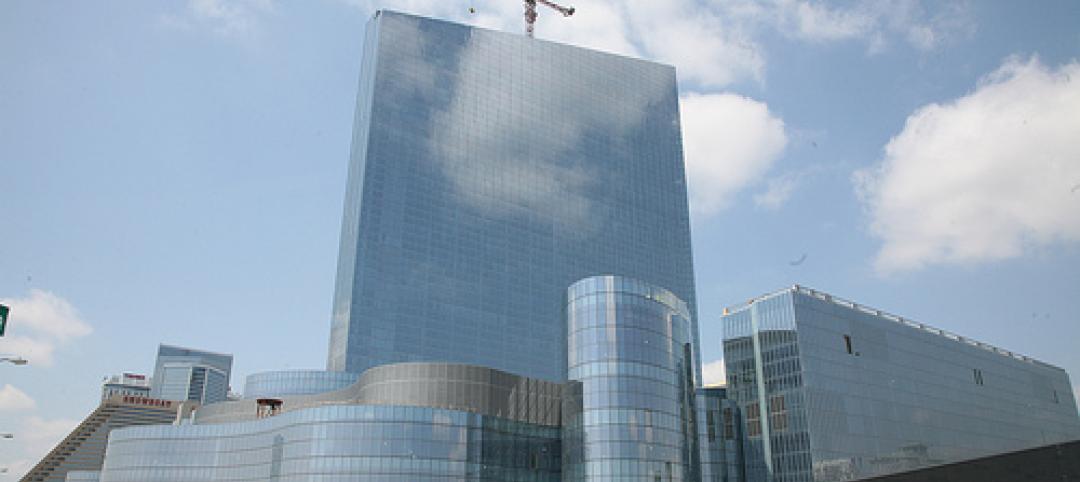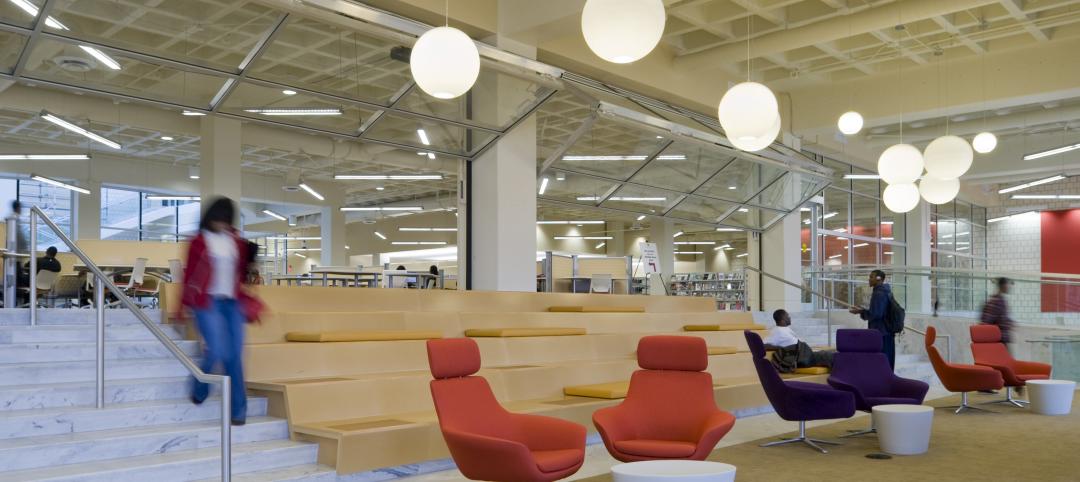Green plumbing fixtures these days are not only designed to be water and energy efficient, they are also designed to save time for installers, users, and maintenance personnel. Moreover, many new products are aimed at improving the user experience as much as they seek to improve the environment.
Modern water-efficient products are a far cry from the industry’s first attempts at low-flow, when the Energy Policy Act of 1992 first mandated the 1.6 gallons per flush (gpf) requirement for toilets. “I would be the first to say that when the industry introduced 1.6-gpf toilets, they were a bit of a disaster,” said Ken Martin, senior director of commercial sales for Delta Faucet Co. “The government mandated the change, the industry tried to scramble to catch up, and although they could easily lower the flows, the water closets didn’t perform. Now with the recent high-efficiency toilets, they’re actually putting some effort into designing those water closets so they actually do work.”
More and more Building Teams are looking to increase water efficiency in projects, but performance is still king. While green is great, fixtures still need to just plain work properly. “Users want them to work the same as or better than the old products,” said Rob Zimmerman, manager of engineering, water conservation, and sustainability for Kohler Co. “Performance matters more than water efficiency. If we’re going to make water-efficient toilets that don’t work as well, and we’ve been through this in the ’90s, people will not accept them.”
Since the dark days of those first 1.6-gpf toilets, manufacturers have met and surpassed the low-flow challenge. Today, there are more eco-friendly faucet, showerhead, and toilet fixtures than ever, and they perform better than ever. Now, manufacturers are moving to provide plenty of options and features that improve both user experience and ease of installation and maintenance.
Expanding the world of choices
If performance is the top consideration, providing lots of options is a close runner-up. “There are some products that are better fits for certain applications than others,” said Zimmerman. “What we’ve tried to do is provide those options.” While a waterless urinal may sound great for the environment, it might not be right for a particular building or application. But whatever the specification or preference, manufacturers aim to fit the bill.
Another benefit to options: they allow plumbers and contractors a step-down program of sorts to familiarize themselves with the new technologies and become comfortable working with them. Kohler offers a variety of flow capacities in both toilets and urinals for just that reason. In addition to the standard 1.6-gpf toilets and 1.0-gpf urinals, the company now offers 1.28- and 1.0-gpf toilets, one-pint urinals, and waterless urinals.
As low-flow becomes more commonplace, companies also are developing innovations that save water in other ways. Low-flow fixtures can be complemented with standard-flow fixtures that guard against wasting water. Delta takes its toilet fixtures a step further with its 81T series flush valves, equipped with automatic dual-flush technology. An H2Optics sensor determines whether to use a 1.6- or 1.1-gal flush by measuring not only the time a user spends at the toilet, as is common with many automatic dual-flush valves, but also the user’s distance from the toilet.
According to Martin, the technology is similar to that of a point-and-shoot digital camera, which sends out a beam of infrared light that bounces off the user to determine how far away he or she is. “The flush valve itself is going to know when you’re within a certain distance, whether sitting down versus standing up,” he said. “It couples that with time to make the determination on whether to go with a full flush or a partial flush, the concept being to try to predict whether you have a liquid load of a solid load to remove.”
Improved sensing technologies also can help faucets avoid unnecessary water waste. Delta’s Proximity Sensor creates a four-inch field around the faucet that activates the flow when a hand enters the field, without the need for sensors or infrared technology. The field is self-calibrating upon installation, adding convenience for the installer. The company also offers a manual option—a faucet that starts and stops with tap of a finger. The one-touch activation improves hygiene, while reducing the number of false activations.
Kohler’s Insight Touchless Technology adapts to the lighting conditions of a restroom to avoid unnecessary activation. Most of the new faucets also include preset shutoff features, which can be set to a stop the flow of water at a desired time.
Give users what they want
The pervasiveness of eco-friendly products on the market also means that manufacturers need to add something extra to their products to differentiate them from every other low-flow fixture out there. Improved user experience and easier installation and maintenance are features that manufacturers are focusing on to make their products stand out.
“We talked to facility managers and plumbers, people who are involved with servicing these products,” said Zimmerman. “They said the real issue for them is maintenance.” In response, Kohler developed the Hybrid energy system for its Insight Touchless Technology. The Hybrid system uses a layered capacitor that collects small electrical discharges from the battery, which the faucet then uses for power. The cell is able to store power, and since the Insight technology uses very small amounts of energy, the battery can last for 30 years or more, according to the manufacturer.
Manufacturers also concentrate on user experience to further improve low-flow technology. One of Delta’s major innovations concerns low-flow showerheads. “We went to 2.5 gallons per minute back when the toilets went to 1.6 gpf, and not a lot of people were all that happy with them. We’re kind of used to them now,” said Martin. The low-flow standard has since dropped to 1.5 gallons per minute, which is relatively easy to achieve simply by restricting the flow of water from the showerhead.
But, says Martin, that low flow can affect the user’s ability to keep warm and still get wet enough to wash. Delta’s solution is H2OKinetics technology, which keeps the flow at 1.5 gpm, but increases the size of the water droplets in order to save both water and energy. “The bigger the drop of water, the more heat it’s going to retain when it hits you,” he said. Since the water stays warmer, users are less likely to crank up the heat. That saves energy and will result in a more satisfactory showering experience.
What’s next for green plumbing?
[pagebreak]
Although plumbing fixture performance has greatly improved in the last two decades, the introduction of increasingly stringent low-flow standards has created problems of its own. “As the flows get driven down, it’s getting more and more challenging to do the job, so to speak, of what the product is supposed to do, particularly in the case of the flush valves or urinals,” said Martin. That is, there is concern whether the new fixtures provide enough water flow to flush the system.
The plumbing products industry is looking to the U.S. Environmental Protection Agency’s (EPA) WaterSense program to not only increase industry accountability that green products continue to perform, but also to raise consumer awareness and acceptance of these products.
“Their criteria in those standards are not just about lowering the flow, they’re also about how the fixture performs,” said Martin. He points to the showerhead standard that WaterSense recently released, which not only drops water use to two gallons a minute, but also provides for heating, thermal, and wetting property standards that have to be met by the showerhead as well.“In other words, you can’t just put a pencil stream of water out there and drop the flow,” said Martin. “It actually has to feel good.”
WaterSense also provides municipalities a sort of guide to follow when determining local flow standards, helping both manufacturers and specifiers by increasing code uniformity. “What we in the industry get worried about is when individual municipalities unilaterally start cranking down flow rates without any regard for safety or performance issues,” said Martin. “WaterSense is creating a common sort of standard, if you like, that municipalities can look to and say, We’ll just require that.”
The potential of not having enough water in drains and pipes to carry waste from toilets and urinals—the so-called “drain line carry problem”—is already starting to become the next big concern in eco-friendly plumbing. “Here’s the problem: you’ve got a big infrastructure already in place throughout the country that’s designed to remove waste on the assumption that these toilets are going to flush 3.5 or more gallons per flush,” said Martin. “These systems work fine at 3.5 gpf, but when they start dropping the water flows that go into the sewer, then you’re basically going to end up with sludge.”
Municipalities in the U.S. have not faced this problem yet, but that may be because low-flow toilets and urinals are still relatively new, said Kohler’s Zimmerman. “I have heard very sporadic comments and anecdotes out there, but nothing that suggests a major trend,” he said. “There are still a lot of water-wasting toilets, urinals, and faucets in the marketplace. As those gradually get changed out and the amount of water in the system is decreased, the drain line problem may sneak up on us.” BD+C
A ‘Nonaqueous’ Way to Conserve in the Restroom
While water and energy conservation get a lot of the fanfare, PMRG Realty, a building management company, found another way to help its client improve its ecological footprint at a Dallas office building. PMRG recently renovated the restrooms at the one million-sf Campbell Center office complex, but found that paper towels were being wasted. “They fall to the floor and aren’t picked up, so the tidiness and waste were the two main reasons we were looking for some sort of solution,” said Rebecca Jack, assistant property manager for the complex.
PMRG solved the property manager’s problem with Bobrick-Koala TowelMate Towel Dispenser Retainers. These stainless steel inserts fit into existing folded towel dispensers and limit the number of paper towels that can be dispensed at one time to just a single towel. This prevents guests from pulling out a handful of towels and possibly dropping some on the floor. According to the manufacturer, the TowelMate reduces paper usage and waste by as much as 20%. The inserts accommodate recycled paper towels for added conservation.
In the two months since they were installed in her building, says Jack, the retainers have worked flawlessly. “Because of this product, there’s no waste going on, and the restrooms are tidy,” she says. BD+C
Related Stories
| May 14, 2012
SOM to break ground on supertall structure in China
The 1,740-feet (530-meter) tall tower will house offices, 300 service apartments and a 350-room, 5-star hotel beneath an arched top.
| May 14, 2012
Adrian Smith + Gordon Gill Architecture design Seoul’s Dancing Dragons
Supertall two-tower complex located in Seoul’s Yongsan International Business District.
| May 11, 2012
Chapter 10 Action Plan: 18 Recommendations for Advancing Sustainability in Reconstructed Buildings
We offer the following recommendations in the hope that they will help step up the pace of high-performance building reconstruction in the U.S. and Canada. We consulted many experts for advice, but these recommendations are solely the responsibility of the editors of Building Design+Construction. We welcome your comments. Please send them to Robert Cassidy, Editorial Director: rcassidy@sgcmail.com.
| May 11, 2012
Betz promoted to senior vice president for McCarthy’s San Diego Office
He will oversee client relations, estimating, office operations and personnel as well as integration of the company’s scheduling, safety and contracts departments.
| May 10, 2012
Chapter 6 Energy Codes + Reconstructed Buildings: 2012 and Beyond
Our experts analyze the next generation of energy and green building codes and how they impact reconstruction.
| May 9, 2012
Tishman delivers Revel six weeks early
Revel stands more than 730 feet tall, consists of over 6.3 milliont--sf of space, and is enclosed by 836,762-sf of glass.
| May 9, 2012
Stoddert Elementary School in DC wins first US DOE Green Ribbon School Award
Sustainable materials, operational efficiency, and student engagement create high-performance, healthy environment for life-long learning.
| May 9, 2012
Shepley Bulfinch given IIDA Design award for Woodruff Library?
The design challenges included creating an entry sequence to orient patrons and highlight services; establishing a sense of identity visible from the exterior; and providing a flexible extended-hours access for part of the learning commons.
| May 9, 2012
Construction Defect Symposium will examine strategies for reducing litigation costs
July event in Key West will target decision makers in the insurance and construction industries.

















